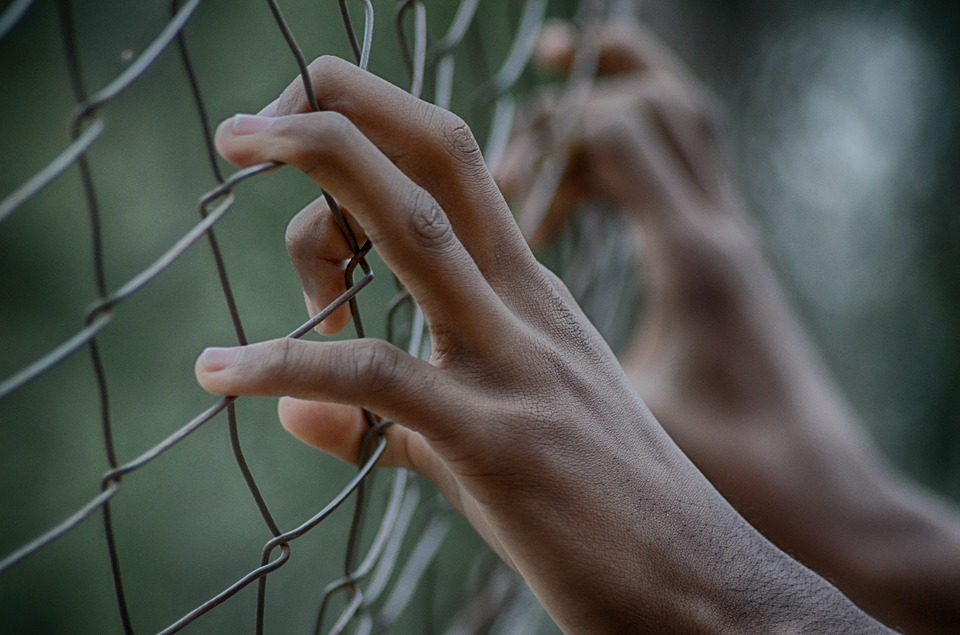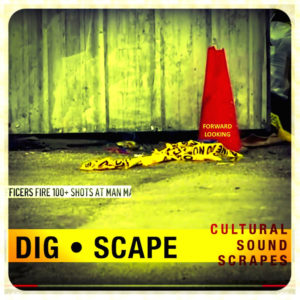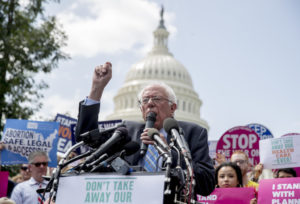Creating a Crucial Path Forward After Prison
After every system failed her, Susan Burton became the helping hand she and so many other formerly incarcerated women needed. Pixabay
Pixabay
Listen to their full conversation about the inhumane conditions black women and other people of color face both inside and outside our broken penitentiary system. You can also read a transcript of the interview below the media player and find past episodes of “Scheer Intelligence” here.
RS: Hi, this is Robert Scheer with another edition of Scheer Intelligence, where the intelligence comes from my guests. And it’s coming from Susan Burton, the coauthor of “Becoming Ms. Burton: From Prison to Recovery to Leading the Fight for Incarcerated Women.” And not to take anything away from Cari Lynn, a distinguished writer who I first heard talk about the book, but it’s really your story. And it’s a book everyone should read. Michelle Alexander, the famous writer, “The New Jim Crow,” recommends it as the most important book; I would certainly second that, for two reasons. And then I’ll throw it over to you. A, it’s depressingly honest and realistic about what’s going on with the prison population, particularly of incarcerated women and the lack of facilities and care about what happens to them when they get out, and so forth. And yet it’s an optimistic book, because you have really provided some critically important answers. And at the beginning you said it’s not a depressing story, so tell me why.
SB: It’s a hard story. It’s hard to read and understand what we do to people, children, in the world, and how as a child I had to work through so much violence, so much abuse, so much hardship, hurt and pain. You know, as a little girl, I had to pick up the skill of navigating society’s illnesses, society’s isms, you know, from racism to classism to racism. And I don’t even know that I’m in this world dealing with all of this, and then I deal with sick people who hurt children, and I just begin to learn to navigate it all. And I should have been playing with dolls and feeling safe and going through cycles of development, but that wasn’t the case. So the beginning of the book is a hard eye-opener, the first half of the book. The second half of the book is when I begin to heal, and I learn to stand up for myself, and stand with other women who have had similar childhood experiences and adult experiences, that the way in which we learned to cope with this had us incarcerated.
RS: You know, the book has very interesting construction. Because it’s a moving story, most poignantly the death of your child at the age of 5 by, what, an L.A. police car racing through South Central on some kind of call? No real apology, no support, no effort to help you with that. So the story is compelling and poignant, but what got me were the statistics at the top of each chapter.
SB: Yes.
RS: And they go directly to what you were just saying. One of them is that 42 percent of African American children under 6 live in poverty. Black women represent 40 percent of prostitutes, 55 percent of those arrested, 85 of those incarcerated. Sixty percent of the women in prison have been sexually assaulted before they’re 18. What got me in your book—because one of the big arguments is the way people excuse our indifference to people who run into trouble, particularly if they’re black or brown. You know, we say well, we’ve done so much for them—that’s the big rationalization. But what you hit is the severe dislocation, to basically the African American population more than any other, after the loss of good jobs after World War II. You know, it’s interesting, we forget so much. I once interviewed Willie Brown, who became the big head of the legislature, the mayor of San Francisco.
SB: Yes.
RS: And he came from Minneola, Texas. And he described something that, I don’t know if it’s in your writing or Michelle Alexander’s introduction to your book, but learning to lower his eyes in the presence of a white woman.
SB: My father never looked across at white people. He never had an eye glance. Like, you know, I’m looking straight across in your eyes; he never did that. And he always referred to white people as “Mr. Charlie.”
RS: The reason I’m bringing that up, I interviewed Willie Brown—
SB: Yes.
RS: Did a big profile for him for the L.A. Times. And some people on the staff, they were down on him, you know. Willie Brown, he wore fancy clothes, he was a successful politician.
SB: Yeah.
RS: I think he was a pretty good politician, basically. But what got me in that interview, he talked about growing up in Minneola, Texas. He would be with his father, and when they’re walking down the sidewalk—and maybe there was a drop down into the street—his father would have to get down into the street to let white teenagers pass.
SB: Yes.
RS: And the reality of segregation, its impact on the black community, both in the North and in the South—I mean, Tom Bradley, who was our mayor here, another person—he told me he had to use the Green Book to figure out hotels he could stay at, even in California.
SB: You know, when you talk about walking past someone, it brings me to today. When I’m in the jails in L.A. County, as the sheriffs and free-world people walk down a hallway, if there are women who are in prison there that’s walking toward us, they’ll have to stop and turn to the wall, and look at the wall until we pass. And it’s the same treatment that we did to people in the South. To say, you can’t look at us. You are excluded from passing us in the street. In this case, you can’t pass us in the hallway. We pass you while you’re standing still. And it has an effect on the people’s feeling of inferiority and isolation, and it has a psychological effect. What they did, and what they do. I once questioned it, and the deputy told me it was about security, but I didn’t see how it was about security; we were still in the hallways together.
RS: You know, one big message from your book–and the book I really recommend, “Becoming Ms. Burton: From Prison to Recovery to Leading the Fight for Incarcerated Women.” I’ve done some interviews in prison, most recently with Kevin Cooper on death row at San Quentin. And the dehumanization of that population, the whole notion of throwaway people—they’ve had their chance, they’re useless, we don’t really believe much in rehabilitation. Your whole point of your book is these women get out—and you discovered yourself after 15 years of being run through this system. After having been sexually, basically raped as a young person by a white man in the neighborhood that you were selling, what, Girl Scout cookies to. Horrible experiences, and yet you’re treated not as someone who has mental problems, social maladjustment problems, lack of education, any of the normal things you would do for your own nephew, your own relatives—no. They’re no-account people, they’re throwaway. That’s how we regard the 2.3 million people in our, in the nation, the world’s largest imprisoned population. What your book does, it cuts through that and it demands that we see that these are full human beings who are victims, originally. I mean, no one could read your story without regarding you as a victim.
SB: I never had a chance. This wasn’t my second chance. Just the fact that I was able to hold on to my sanity, to myself, through all of what I went through, is just a testament. And when I was given an opportunity, when someone did reach out and help me, then I was able to pull myself up and make a stand. And that’s what I do at A New Way of Life Reentry Project. I help women who have never had a chance to get an opportunity to begin to know their value, know their worth, to begin to be willing and able to fight for their life, to fight for the right to be the best that they can be. And to date, we have helped over a thousand women come back into the community. We’ve reunited 300 children with their moms. You know, my son’s death just sent me into a world of darkness. The pain of losing him, the fact that the police department never even acknowledged one of their detectives killed my son—it was all so painful. And my body just could not, could not hold any more pain. And so I drank. I drank to drown the grief. I drank to drown the pain. And that led to substance use. The War on Drugs was in full, full range in my community, and there could have been, and there should have been help for me. The police department should have reached out and gave me help, but they didn’t. I’m sure the detective was able to go to counseling, was able to get paid time off.
RS: He killed your son driving too fast in, what, response to a call or something?
SB: Yeah. I don’t—I never did get any of the real facts. I found out his name by reading a story in the L.A. Times. There was no contact, no—so I don’t know. And that, too—that, too was painful.
RS: We hear a lot about victims’ rights and everything, you can’t let this person out of jail, you can’t rehabilitate. But you start—you start as a real victim here, the death of your son. And no one thought about your victim rights. You were expendable. And this is not in the Deep South. This is in Los Angeles, with probably an enlightened, liberal, democratic mayor, City Council, the whole deal.
SB: No one came to my aid. And when you read the book, I reach a point where I realize every system had failed me, from the family system to the school system to the social service system network, to the judicial system. And I felt like I failed me, too. Being able to go to Santa Monica and go into recovery, and see the difference—how people were treated with drug addictions in Santa Monica versus South L.A., was a real wake-up call for me. And that’s what prompted me to start a new way of life.
RS: We should mention, you did start a new way of life, but that’s also the name of the organization—
SB: The organization, yes.
RS: —that now for decades has helped people who were actually just dumped on the street, put out of jail, prison, given what, a box or something—
SB: Yeah.
RS: I mean, you should describe what you stepped into when you realized you had help, because you found one of the rare places—it was actually privately set up, and so forth, and it meant all the difference to you. And then part of coming out of a successful program, you wanted to give back, and you were shocked to see how little was available. And I want you to address one other thing. We have a lot of discussion about right to life, and should you have abortion, should you have children. It’s a big, dramatic, wedge issue. I always felt the real issue is, do you really care about the lives you’re saving, the unborn—do you really care about them? And you describe the fight of these women, at a prison, to get their children back, and the role that your organization plays in helping them win their children back. We got a lot of defense of motherhood and childbearing and right to life, and then it breaks down with, oh yeah, but they’re the wrong people to have children, or they’re no good, or what have you. Maybe you could talk a little bit about the actual work that you do there.
SB: Many times when women are incarcerated, by the time they’re released they’ve lost all rights to their children. So going and being incarcerated could be a death sentence to their motherhood. Those women who have maintained their right for reunification, we support them to get their children back, we support them to find jobs, we support them to go back to school, and we support them to become good mothers to their children. Not saying that because they were incarcerated, that they were a bad mother. They were in maybe the wrong place at the wrong time. Maybe their poverty caused them to commit certain crimes in order to just live. People are in those types of situations, and they have to make those types of calls on a daily basis. But we support them to become better citizens, good moms, and to reunite with their children. So we have an attorney on staff to help them walk through the process of meeting the requirements of the Department of Children and Family Services. You know, a woman coming out of prison, in order for her to get her children back, she has to attend so many different classes that it’s like having a full-time job. And without help and support, she’s unable to do that. The systems, the Department of Children and Family systems that are in place, the social workers there are, caseloads are overloaded; they can’t always make the appointments on time; they can’t always carry through. And we have an attorney who helps that woman to be able to document what’s happening and to comply with all the requirements of the court in order to get her children back. And we have homes; we have homes that children can live in with their parents until the mom can get further on her feet and move out independently. And this takes place when a woman is literally dropped off, released from prison, she gets off a bus downtown, Skid Row, she has no I.D., she has no Social Security card, she’s just been literally sent through a sentence that is basic to torture. And she gets off the bus, and she’s trying to make her way, and there’s nothing for her. Over and over again, that was my experience. That’s why the work I do at A New Way of Life is so important. And people think that it’s really hard and complicated, but what is it to have a home? We have single-family homes, seven of them; five in Los Angeles, two in Long Beach. And women come there, they live there, they make it their home; it’s a real simple concept to me. We welcome them, we support them with transportation, clothing, food. They get employed, they go back to school, they pitch in, they make a home, they create a whole safety network within that home. I’m really grateful and thankful that I can do the work that I do, supporting women coming home, and holding up A New Way of Life as a model for this country. And I’ve actually developed a training, a safe-house network training, that I am beginning to train people all over the country. And, I can say, all over the world. We actually have supported the opening of a house in Kampala, Uganda; they’ve opened a house, just last week was the opening of a house there. And we have our model expanding into Chicago and Virginia. And I think that what I do here is unique and special. It’s a grassroots, community effort. And I want to spread and give as much information as I can that women all over the nation will have a place to land after they are released from incarceration, a place to belong, and a place to rebuild their lives. A place that they can find a new way of life and be willing to fight for their right to be the best that they can be.
RS: [omission for station break] When we took the break here, we were just talking about—you can do something about it. OK. Now I’m sitting here thinking, I’ve heard this all my life. And I’m not a kid anymore; I’m going to be 83 years old in a couple of weeks. And every once in a while when I was working for the L.A. Times, wherever I’ve been, I run into people, they do a good job, they’re really making a difference, and you know what? The people who have power, the people who can really fund it, who can really do something about it, they don’t want to use the model. And I want to say, I heard about your program originally with the greatest enthusiasm from Frank Gehry, who is probably the world’s most famous architect. And I thought, yeah, you know, but I’ve heard that before. But you’ve done it now, and you’ve done it—my big question to you, you’ve been honored; you’ve been, I don’t know, I forget all the honors. You’re a fellow of the Open Society Foundations, and you’re one of the most admired people, et cetera, et cetera. Why—why isn’t this a national program? Why isn’t it government funded? Why don’t they say, hey, something works here—we can do something, we don’t have to have these people get out of prison or jail and just be sitting there forlorn on some street corner where people want to get them in trouble, or they’re going to get in trouble. Where’s the mayor? Where’s the police board? Where are all these folks?
SB: You know, I can ponder and spend time saying, you know, why isn’t someone doing this and why isn’t someone doing that. But you know, there are things that I can do, and that’s what I do. Gov. [Gavin] Newsom, before he won the election, he came and spent about two and a half, three hours with us. And I don’t know if that visit is going to move him to a certain direction, but you know, he came and visited us and spent time with us. Sometimes what we get is time, people’s time and interest. You know, there’s a chapter in the book that I talk about the experience of having funding coming from government, law enforcement, and having to terminate that contract because it was harmful to the mission.
RS: Spell that out, because I’ve read that, but other people haven’t. That’s an important point you make there.
SB: Well, I had a contract that promoted law enforcement coming into our houses as if we were breaking the law. Pulling guns on us, standing the women up against the wall with their hands up. And you know, there’s a YouTube video called “Compliance Checks.” And you’ll see me arguing with LAPD about the way they treated women in their home, in the homes at A New Way of Life. And the policeman says to me, if I don’t want to play the game, don’t take the money. In other words, they were paying me to be a part of the harassment and the oppression and the suppression of the women who [are] coming home trying to change their lives and make better lives.
RS: But this wasn’t their money, this is our money.
SB: This is our money. But this is what they said. And so you know, I wrote them a letter and told them I would no longer contract with them. And I terminated the contract. So these are some of the challenges that, you know, small, community-based organizations have to deal with when entering into those contracts.
RS: Let me ask you a question, because you’ve been on the inside, starting as a very young person after being sexually attacked by—you know, I mean, just an incredible story. It’s one adversity after another. Then you come out and you spend decades providing a real model for the nation, and maybe other countries, for how to do rehabilitation, how to save people, how to help mothers get back with their children. And you’re doing it primarily in a community, the deep blue state of California, community of Los Angeles, prides itself on being the model for the world now, in a country that has the largest prison population—
SB: Yes.
RS: —that thinks it’s the champion of freedom. And what I want to ask you is precisely about your connection with power.
SB: So I traveled with Frank Gehry, Yale architecture school, Chris Stone from the Open Society Foundations, students in the architecture department and Impact Justice. We went to Norway, we went to Sweden, and we looked at what they do over there in those countries. And I came back—I mean, it was amazing, astonishing, the way they treat people with value. And the whole goal of the prisons there is rehabilitation. It’s not punishment. Our goal in the United States is punishment. And I came back from there clearly understanding that we could do something different if it was the political will, if it was the people’s will. That this isn’t, you know, rocket science, treating people with dignity. There are no throwaway people. We all matter. Our lives matter. And there, in their prison system, you can see that. You can tell that. One of the guards there, the head guard, he said, one day—
RS: This is in Norway?
SB: This is in Norway. The guard said, “One day this man is going to be released. And he might be my neighbor. And if he’s my neighbor, I want him to be a good neighbor. So my job here is to support the rehabilitation of all the people in the prison.” When people leave the prison there, they leave with a job, they leave with a house. We have it so backwards. Ninety-five percent of the 2.3 million people in the prison-industrial complex in the U.S. is going to be released one day. And we want the people coming into our communities to be contributing members. We want them, I want them to be good citizens. So at A New Way of Life, we support that. You know, after they’ve been released. But we could be doing much better in our prison system.
RS: You know, it’s interesting. Everybody always thinks, well, it’s sad, but I can’t do anything about it because these are not problems that can be dealt with in a serious and resolved way. This is where I—
SB: There are things that we all can do. We can invest and support nonprofits that are doing the work. People can support A New Way of Life. They can write letters to their legislatures, their senators, their congresspeople. They can tell them that they want the prison system to be more about rehabilitation. They can talk about reinvesting money in communities. We pay $75,000 a year to incarcerate one person. And they come home, and we don’t invest anything on the back end. That’s just ridiculous. We could be doing so much more, we could have higher education, rehabilitation programs, training programs while people are incarcerated. I mean, while I was incarcerated, I wanted to go to beauty school; I was assigned to fire camp. I was put into a job after the fire camp training that paid me eight cents an hour. And if I didn’t go to that job, I’d have to stay a day longer in prison. I just want the listener to think about that. Eight cents an hour, and if I don’t go to work, mowing lawns, sweeping the compound, then I’m incarcerated a day longer. We talk about a forced labor pool, we talk about slavery in the 21st century. It’s outrageous.
RS: Well, that’s a good takeaway. Because sometimes people listen to these podcasts and they say, yeah, well, it’s a corrupt world, and you know, nothing you can do about it. And you read this book, “Becoming Ms. Burton: From Prison to Recovery to Leading the Fight for Incarcerated Women.” And it’s done, by the way, I should give her credit, Cari Lynn–
SB: Cari Lynn is a great writer, she really helped to assemble my words.
RS: Yeah, a great writer, and she’s the one who introduced me to this book. So I think the lesson of “Becoming Ms. Burton,” is this is a how-to book. It’s a how-to book to develop an alternative to the prison-industrial complex where you lock up people, then you put ‘em out on the street, they get in trouble right away, and boom, you’re back in the prison and it’s another $75,000 a year you got to pay. So I want to thank you, Susan Burton. And this has been another edition of Scheer Intelligence. My producer who got me to do this, I must say, and educated me about it, is Joshua Scheer. And our engineers here at KCRW are Mario Diaz and Kat Yore. And we’ll be back next week with another edition of Scheer Intelligence.
Your support matters…
Independent journalism is under threat and overshadowed by heavily funded mainstream media.
You can help level the playing field. Become a member.
Your tax-deductible contribution keeps us digging beneath the headlines to give you thought-provoking, investigative reporting and analysis that unearths what's really happening- without compromise.
Give today to support our courageous, independent journalists.






You need to be a supporter to comment.
There are currently no responses to this article.
Be the first to respond.